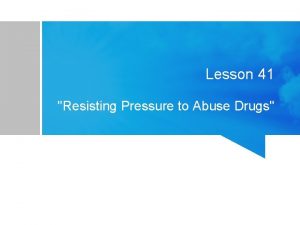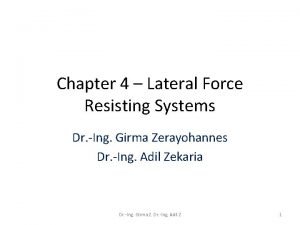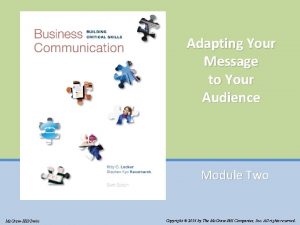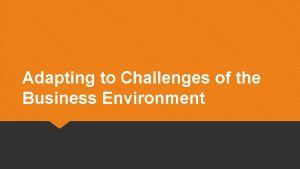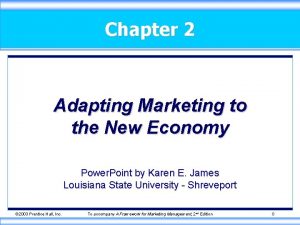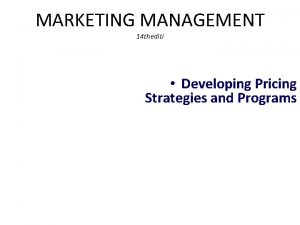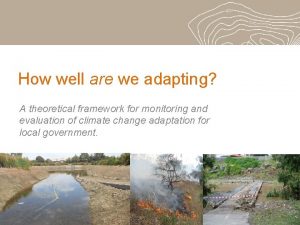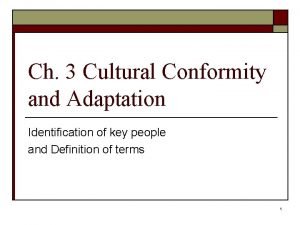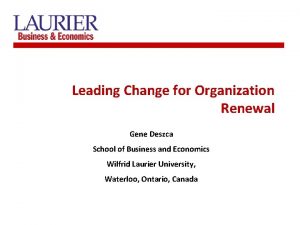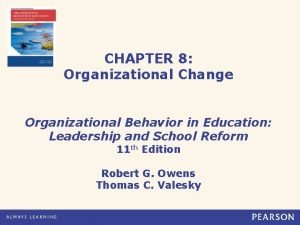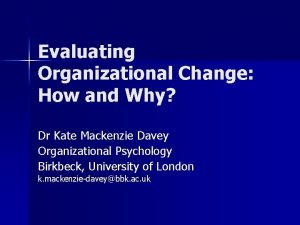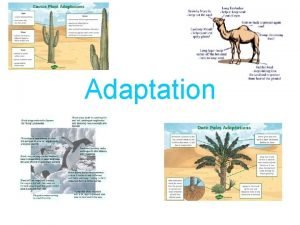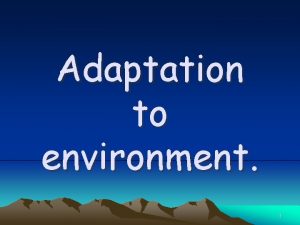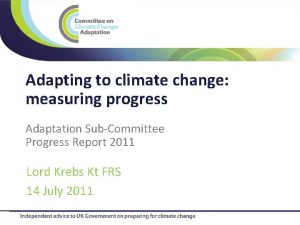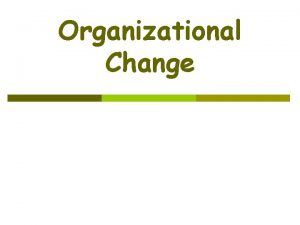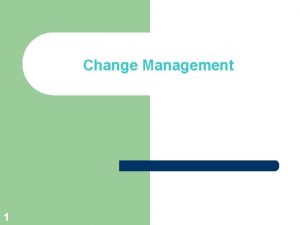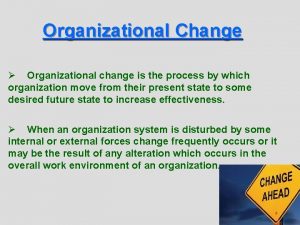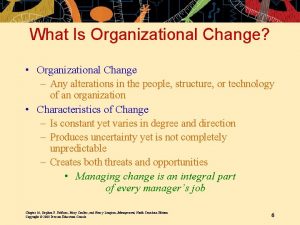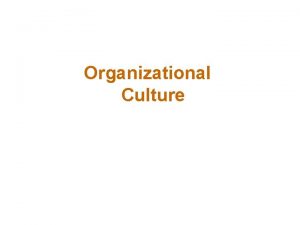Adaptation in Change Adapting VS Resisting Organizational Change

















- Slides: 17

Adaptation in Change ● ● ● Adapting VS Resisting Organizational Change Agents must allow space to adapt for successful change to occur A race against the clock often proves to be unproductive - give Adaptation time! Organizational Change occurs in three dimensions: Personal, Collective & Organizational

Three Dimensions ● ● ● INDIVIDUAL – requires letting go of the old, becoming competent to perform the new, and accepting the validity of the change for oneself and one's peers/coworkers – collectively acceptable? COLLECTIVE – Peer pressure is a powerful force; Social Compact must discredit existing and welcome the new ORGANIZATIONAL – covers the inherent process used to introduce the change as a whole

Process of Change ● Revised Lewin's theory from unfreezing, moving and refreezing to awakening, transition and ritualization ● Awakening – equates to Unfreezing ● Transition – equates to Moving ● Ritualization – equates to Refreezing

Collerette's Change Model

The Stage of Awakening ● ● ● Prompt for change occurs Target reflects on pros and cons of accepting and adapting to the change May react as one of the 3 typical positions in org change: Supporter, Opponent or Ambivalent ● Must arouse a Critical Mass for change to awaken ● Best to involve them in the assessment & plan ● Need enough Triggers to complete the awakening

Change Triggers ● Present situation full of shortcomings = dissatisfaction with “what is” ● Leadership pressure ● Opportunity for individual gains ● ● #1 and #2 are more powerful than #3 but all three together = very Motivating or conducive to AWAKENING Various strategies can be used to enhance their receptiveness to change

Importance of Time ● ● The message is clear – the Awakening Stage must flow at a relaxed and reflective rate Change agents must give the change targets plenty of time to move through this stage if they want the initiative to be successful Must also be sure to target all three levels: individual, collective and organizational Must be managed methodogically & with rigour

ACTIVE CHANGE ● We have a choice about how we manage change: ● 1. We can engage actively and consciously ● 2. We can resist and respond reactively ● ● ACTIVE CHANGE – we choose the best action possible from various possibilities in conscious, participative steps REACTIVE CHANGE – no choice made, we react unconsciously – I had no choice!

ACTIVE CHANGE MODEL


Satir Change Model

Change Effects ● ● The very culture of an organization needs to be reshaped to properly support the new processes Includes the structures, rewards, appraisal methods, and roles – all are affected Change is no longer sequential or occasional – it is now PERPETUAL! Org change is a process of mutual adaptation between leader style and behaviours, existing people, culture, and organizational design

Bainbridge Redesign Model ● DESIGN STAGE – determine requirements ● DEFINITION STAGE - specify & record design ● ● ● DEVELOPMENT STAGE – cultivate new capacities (education, training, restructuring) DISMANTLING STAGE – remove or convert the redundant parts of the organization DEPLOYMENT STAGE – new capabilities introduced, internally & externally

Beyond the Change Model

DEEP CHANGE ● Requires new ways of thinking and acting ● Willing to surrender control, take risks ● ● Must occur within the players as well as each level of an organization or society All must become empowered Once we experience deep change within ourselves, we can each bring deep change to the systems around us Flexibility is critical since change is perpetual

st 21 21 Century Change ● ● A change style reminiscent of that used by Martin Luther King or M. Gandhi are suggested: an empowering self-modification strategy Has a moral-relational premise People must feel both challenged and supported for feelings of empowerment to occur Leader must show internal discipline, vision, expectation and sensitivity = heroic

Transformational Leaders ● Responsible for setting the context for change ● Must cultivate a culture and vision for change ● Envision, enable, and energize ● Must be able to counsel, teach, coach & reward ● ● Help habits, attitudes & values become congruent with the change vision and goals Uses a systematic change implementation process
 Resisting pressure to abuse drugs is a responsible
Resisting pressure to abuse drugs is a responsible Resisting length of hill road
Resisting length of hill road Lateral force resisting system
Lateral force resisting system Resisting temptation lds
Resisting temptation lds Adapting curriculum to bridge equity gaps
Adapting curriculum to bridge equity gaps Adapting the message to your audience
Adapting the message to your audience Adapting the price
Adapting the price How well are we adapting
How well are we adapting Adapting to challenges of the micro environment
Adapting to challenges of the micro environment Adapting to your audience
Adapting to your audience Adapting marketing to the new economy
Adapting marketing to the new economy Adapting the price
Adapting the price How well are we adapting
How well are we adapting Adapting and adopting materials
Adapting and adopting materials The process of adapting borrowed cultural traits.
The process of adapting borrowed cultural traits. Leading change and organizational renewal
Leading change and organizational renewal Organizational change in education
Organizational change in education Evaluating organizational change
Evaluating organizational change
